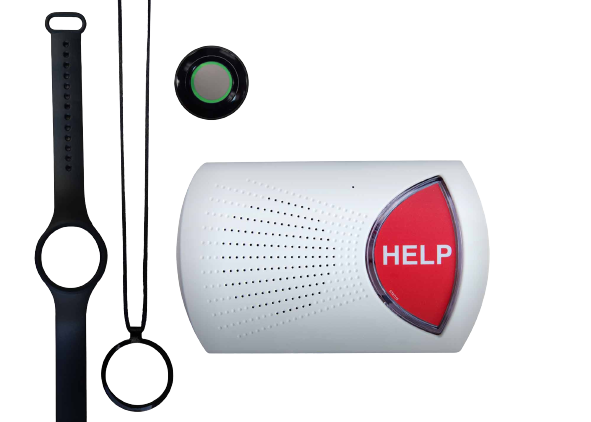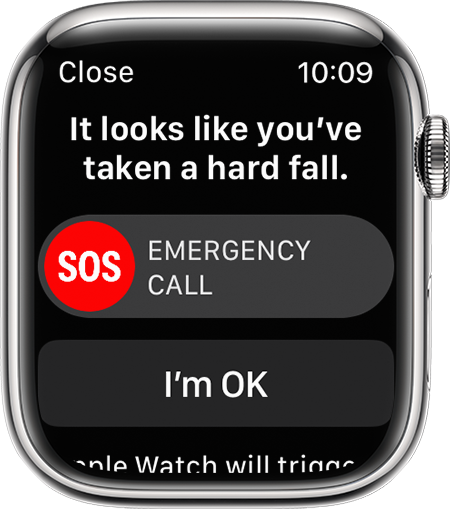Medical emergencies can happen at any time, and it is crucial to have a system in place that can alert emergency responders in case of an emergency. Medical alert systems are devices designed to provide individuals with a quick and effective means of seeking medical assistance when needed. These systems are especially useful for older adults, individuals with chronic medical conditions, and people with disabilities who risk falling or experiencing a medical emergency.

Medical alert systems have become increasingly popular over the years, and various types are now available on the market. This article will discuss the different types of available medical alert systems and how they work. By understanding the different available options, you can make an informed decision when choosing the best medical alert system for your needs.
Traditional Medical Alert Systems
Traditional medical alert systems, or home-based medical alert systems, are designed to work within the individual’s home. These systems typically consist of a base station connected to a phone line and a wearable emergency button or pendant.
How it works:
When individual experiences a medical emergency, they can press the emergency button on the wearable device. This sends a signal to the base station, which sends a call to the monitoring center. A trained operator will then speak with the individual through the base station’s speakerphone and dispatch emergency services if necessary.
Advantages:
- Provides a reliable way to get help in case of an emergency
- Simple and easy to use
- Does not require a smartphone or cellular plan
- Can be more affordable than other types of medical alert systems
Disadvantages:
- Limited to use within the home or a limited range around the home
- Requires a landline phone connection
- May not work during power outages or if the phone line is down
Traditional medical alert systems are a reliable and affordable option for individuals who spend most of their time at home and have a landline phone connection. However, it may not be the best option for those who are frequently on the go or live in areas with frequent power outages.
Mobile Medical Alert Systems
Mobile medical alert systems are designed for individuals who are frequently on the go or live an active lifestyle. These systems typically consist of a wearable device, such as a pendant or wristband, that can be worn at all times. They use cellular networks to communicate with the monitoring center, allowing the individual to call for help from anywhere with cellular coverage.

How it works:
When individual experiences a medical emergency, they can press the emergency button on their wearable device. This sends a signal to the monitoring center, where a trained operator will speak with the individual through the device’s speakerphone and dispatch emergency services if necessary.
Advantages:
- Provides a way to call for help from anywhere with cellular coverage
- Allows for individuals to maintain their independence while still having access to emergency assistance
- Some models offer fall-detection technology
- Many models have GPS tracking capabilities, which can help locate the individual in case of an emergency
Disadvantages:
- Requires a cellular plan, which can add additional costs
- May have limited battery life and require frequent charging
- Some models may not work in areas with poor cellular coverage
Mobile medical alert systems are an excellent option for individuals who are frequently on the go or want to maintain their independence while still having access to emergency assistance. However, it is important to consider the additional costs of a cellular plan and the potential limitations of poor cellular coverage.
Medical Alert Smartwatch Systems
Medical alert smartwatch systems are wearable devices that combine the features of a traditional medical alert system with those of a smartwatch. These devices typically include an emergency button, fall detection technology, and GPS tracking capabilities. They also offer features like fitness tracking, messaging, and mobile apps.
How it works:
When individual experiences a medical emergency, they can press the emergency button on their smartwatch. This sends a signal to the monitoring center, where a trained operator will speak with the individual through the watch’s speakerphone and dispatch emergency services if necessary. Many models also include fall detection technology that automatically sends an alert if the device detects a fall.
Advantages:
- Offers a combination of a medical alert system and smartwatch features
- Can be more discreet than other types of medical alert systems
- Allows for tracking of health and fitness data
- May offer additional features such as messaging and mobile apps
Disadvantages:
- May require a smartphone to function
- Can be more expensive than other types of medical alert systems
- May have a shorter battery life than traditional medical alert systems
Medical alert smartwatch systems offer a unique combination of medical alert and smartwatch features that can appeal to individuals who want a discreet and versatile device. However, it is important to consider the additional costs and potential limitations of battery life and smartphone compatibility.
Fall Detection Systems
Fall detection systems are designed to automatically detect when an individual has fallen and alert the monitoring center. These systems can be built into other medical alert systems, such as traditional or mobile or standalone devices.
How it works:
Fall detection systems use sensors to detect when an individual has fallen. The sensors may be built into a wearable device or placed in the home environment. The system automatically alerts the monitoring center when a fall is detected. A trained operator will then speak with the individual through the device’s speakerphone and dispatch emergency services if necessary.
Advantages:
- Provides an extra layer of protection for individuals who are at a higher risk of falling
- Can automatically alert the monitoring center without the need for the individual to press an emergency button
- May be built into other types of medical alert systems
Disadvantages:
- May have false positives, such as detecting a fall when the individual has not fallen
- May not be reliable for all types of falls, such as falls onto a soft surface
- Standalone devices may have a limited range and only work within the home environment
Fall detection systems can be a valuable addition to other medical alert systems or standalone devices for individuals at a higher risk of falling. However, it is important to consider the potential for false positives and limitations of certain types of falls.
GPS Medical Alert Systems
GPS medical alert systems are designed to provide location tracking in addition to emergency response services. These systems use GPS technology to track the location of the individual, which can be useful in emergencies where the individual may not be able to provide their location.
How it works:
GPS medical alert systems use GPS technology to track the location of the individual. When the individual presses the emergency button or a fall is detected, the system will send an alert to the monitoring center with the individual’s location. A trained operator will then speak with the individual through the device’s speakerphone and dispatch emergency services if necessary.
Advantages:
- Provides location tracking in addition to emergency response services
- Can be useful in emergency situations where the individual may not be able to provide their location
- Can offer peace of mind for caregivers or family members who want to know the individual’s location
Disadvantages:
- May not be as accurate in indoor environments or areas with poor GPS signal
- May require a smartphone to function
- Can be more expensive than other types of medical alert systems
GPS medical alert systems can be a valuable option for individuals who want location tracking in addition to emergency response services. However, it is important to consider the potential limitations of GPS technology in certain environments and the potential additional costs.
Voice-Activated Medical Alert Systems
Voice-activated medical alert systems are designed to allow individuals to call for help using voice commands rather than pressing an emergency button. These systems use voice recognition technology to interpret the individual’s voice commands and send an alert to the monitoring center.

How it works:
Voice-activated medical alert systems use voice recognition technology to interpret the individual’s voice commands. The individual can call for help by saying a predetermined phrase, such as “help” or “call for assistance.” The system will then send an alert to the monitoring center, and a trained operator will speak with the individual through the device’s speakerphone and dispatch emergency services if necessary.
Advantages:
- Allows for hands-free calling for help
- Can be helpful for individuals with mobility issues or who are unable to press an emergency button
- May be less obtrusive than other types of medical alert systems
Disadvantages:
- May not be as reliable as other types of medical alert systems, as the voice recognition technology may not always interpret the individual’s commands accurately
- May require a smartphone or other device to function
- May be more expensive than traditional or mobile medical alert systems
Voice-activated medical alert systems can be a valuable option for individuals who want a hands-free way to call for help. However, it is important to consider the potential limitations of voice recognition technology and the potential additional costs.
Factors to Consider When Choosing a Medical Alert System
The individual’s mobility and lifestyle:
- Consider the individual’s level of mobility and the activities they typically engage in
- Choose a system that is comfortable to wear and won’t interfere with daily activities
- Consider whether mobile or GPS may be more suitable for individuals who are frequently on the go
The range of the system:
- Determine the range of the system and whether it covers the individual’s living space and surrounding areas
- Consider whether the range can be extended with additional equipment or accessories
The cost and subscription options:
- Determine the upfront cost of the system, as well as any ongoing subscription or monitoring fees
- Consider whether the system offers different subscription options, such as monthly or annual plans
The reliability of the system:
- Research the system’s track record and read reviews from other users
- Consider whether the system uses reliable technology and has a backup system in case of power outages or other issues
The additional features and services offered:
- Consider whether the system offers additional features, such as fall detection or medication reminders
- Determine whether additional services, such as caregiver support or emergency response, are available
The reputation of the company providing the system:
- Research the company providing the system and its history in the medical alert industry
- Determine whether the company has a good reputation for customer service and support
Considering these factors when choosing a medical alert system can help ensure that the system is a good fit for the individual’s needs and provides the necessary support and peace of mind.
Importance of Choosing the Right Medical Alert System
Choosing the right medical alert system can provide peace of mind for the individual using the system and their caregivers or loved ones. It can also ensure that the individual receives prompt and appropriate emergency assistance. Factors such as the individual’s mobility and lifestyle, the range of the system, the cost and reliability of the system, and the additional features and services offered should all be considered when choosing a medical alert system.
Overall, various medical alert systems are available, each with its advantages and disadvantages. Considering the individual’s needs, circumstances, and the factors listed above, it is possible to choose a medical alert system that provides the necessary support and peace of mind.
